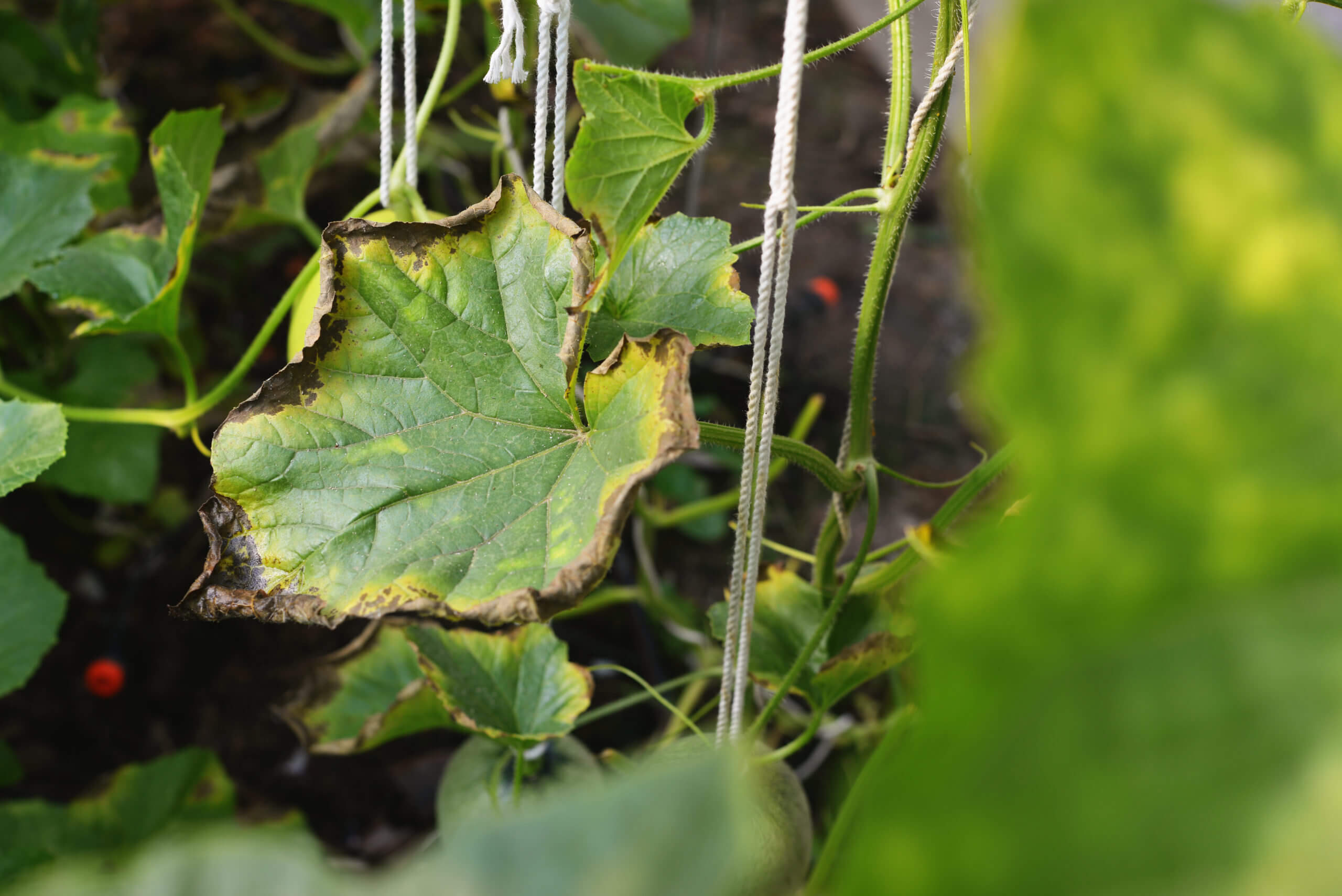
Deficiencia de Calcio
Calcium Deficiency
-
Pathogen:
Nutritional disorder
Type:
Risk to the plant:
CRÍTICO



DESCRIPTION
WHO CAUSES IT?
Calcium is an essential nutrient for the stability of cell membranes, the growth of young tissues, and cell division. It also contributes to disease resistance and the proper development of roots and fruits. Its deficiency occurs primarily in acidic soils, with excess potassium, magnesium, or sodium that block absorption, and in situations of irregular irrigation that limit its transport within the plant. Because it is not very mobile in the phloem, symptoms manifest mainly in leaves and young shoots.
SYMPTOMS
Calcium deficiency first affects actively growing parts. It is especially recognized in fruit quality problems such as blossom end rot in tomatoes and peppers, or bitter pit in apples.
Typical symptoms:
• Deformed, curled, or dry-tipped young leaves.
• Necrosis on the edges and tips of new leaves.
• Deterioration of fine root and shoot growth.
• Appearance of dark, sunken spots on fruit (e.g., blossom end rot in tomatoes).
• Soft or watery texture on fruit and leaves.
As a non-mobile nutrient, calcium deficiency develops in a localized manner, primarily affecting growing organs, with a strong impact on production quality.
Developmental stages:
• Initial: mild deformations in young leaves and shoot tips.
• Intermediate stage: necrosis at leaf tips and flower abortion.
• Advanced: sunken spots on fruit, blossom end rot.
• Final: loss of commercial value of the crop and reduction in yield.




TEMPERATURE AND HUMIDITY
-
-

HOW IS IT SPREAD?
-

HOW TO REMOVE IT?
Home remedies
There are no home treatments
Chemical treatments
• SOLUBLE CALCIUM FERTILIZERS: Calcium nitrate, calcium chloride; immediate action.
• CONTROLLED-RELEASE FERTILIZERS: Stable formulations that ensure prolonged supply.
• ORGANIC FERTILIZERS + CALCIUM: Bone meal, ground shells, enriched compost.
• FERTILIZERS WITH AMINO ACIDS + CALCIUM: Promote rapid foliar absorption at critical times (fruit set, fattening).
Authorized treatments in organic farming
• SOLUBLE CALCIUM FERTILIZERS: Calcium nitrate, calcium chloride; immediate action.
• CONTROLLED-RELEASE FERTILIZERS: Stable formulations that ensure prolonged supply.
• ORGANIC FERTILIZERS + CALCIUM: Bone meal, ground shells, enriched compost.
• FERTILIZERS WITH AMINO ACIDS + CALCIUM: Promote rapid foliar absorption at critical times (fruit set, fattening).
Insect allies
PREDATORY MITES
LADYBUGS
LACEWINGS
PARASITIC WASPS
HOVERFLIES OR PARASITIC FLIES
PREDATORY BUGS
There are no natural allies
Mycodiplosis oidii (predatory mosquito)
EFFECTIVE PRODUCTS TO ELIMINATE THIS DISEASE
Sponsored link
Sponsored link
Sponsored link
Sponsored link
Sponsored link
Sponsored link
Sponsored link
Sponsored link
Sponsored link
Effective against all types of fungi
Sponsored link
Sponsored link
Sponsored link
Sponsored link
Sponsored link
Sponsored link
Sponsored link
To maintain adequate calcium levels and ensure proper root, stem, and fruit development, it is important to implement strategies that facilitate calcium availability and absorption, combining fertilization and soil management.
• Apply calcium amendments such as agricultural lime, gypsum, or limestone fertilizers.
• Incorporate calcium-rich compost or manure.
• Maintain uniform irrigation to facilitate calcium transport within the plant.
• Avoid excess potassium, magnesium, or sodium, which could block its absorption.
• Improve soil aeration and structure.
• Control weeds that compete for nutrients.
• Maintain an adequate soil pH (approximately 6–7).
























